
by Beth Bolles | Sep 2, 2014

A bountiful harvest
A hands-on workshop will be offered for novice gardeners to learn the basics of Fall and Winter vegetable gardening. The entire class will be outside utilizing raised beds and in ground planting areas. Participants will be learning about soil preparation, seeding and transplanting techniques, vegetable thinning, and general care until harvest. Class size is limited to 20 people. Pre registration is required before September 17 by calling 475-5230 or emailing bbolles@ufl.edu
The session will be at Escambia County Extension, 3740 Stefani Road on Saturday, September 20 from 9:00 a.m. to 11:00 a.m. Dress for outside weather.
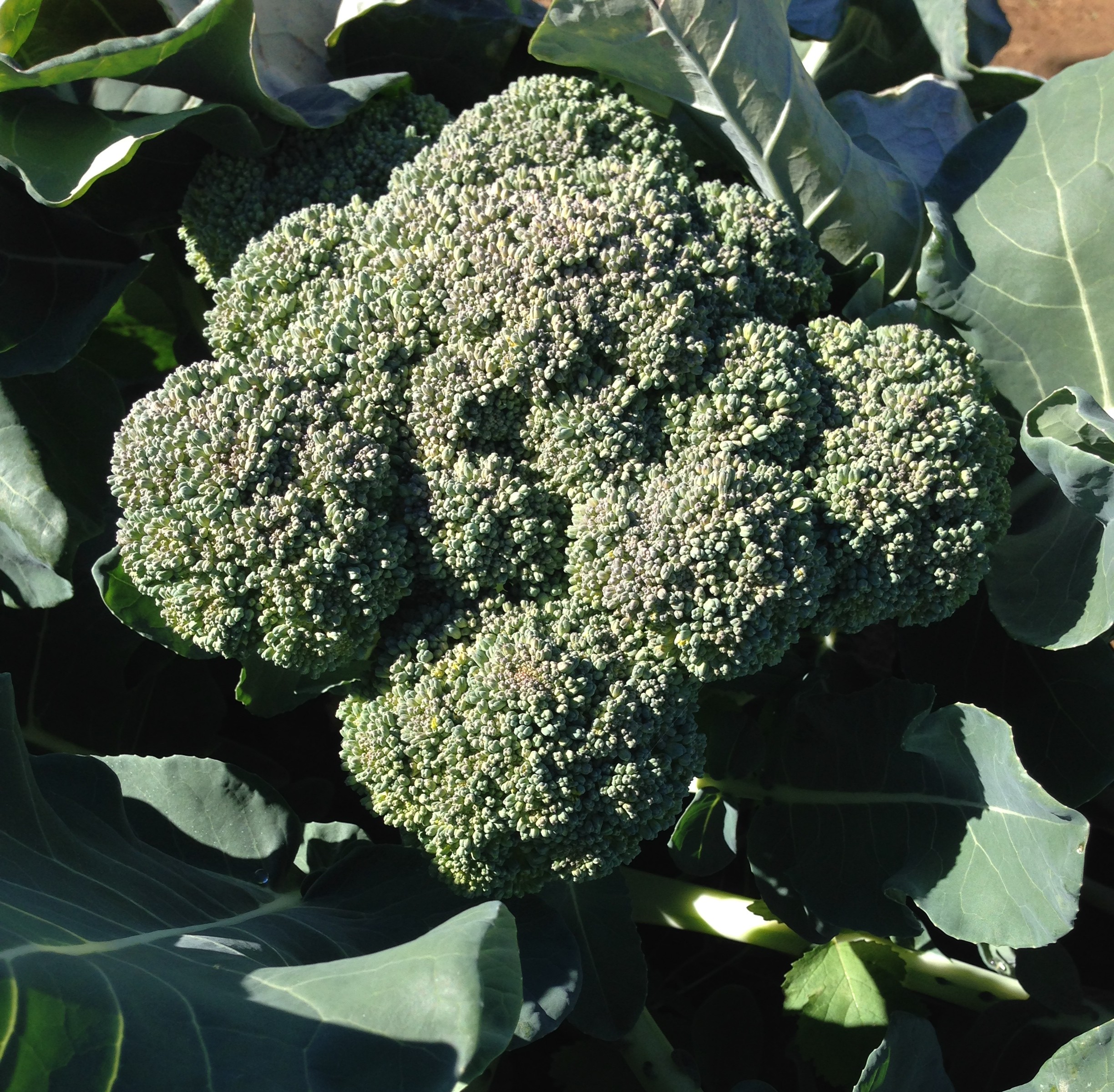
by Mary Salinas | Sep 2, 2014
Need some advice to get started with a fall garden? The horticulture agents of the Northwest Extension District are pleased to present an interactive video series for the beginning gardener.
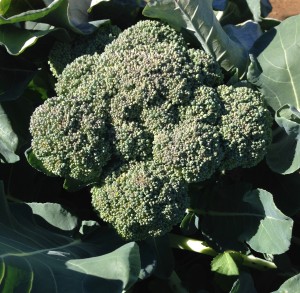
Broccoli, a popular winter vegetable. Photo by Mary Derrick, UF IFAS
The schedule is as follows:
September 9th – Starting a Home Vegetable Garden: Expectations, planning and site preparation
September 16th – Starting a Home Vegetable Garden: Tips to use whether you are starting with seeds or transplants
September 23rd – Tops and Bottoms for the Cool Season Garden: Cool season crops such as lettuce, broccoli, cabbage, chard, strawberries, onions, potatoes and carrots
Consult the list of Participating counties for the location nearest to you. The cost is $30 for an individual and $45 for a couple and covers all three sessions and informative handouts. All classes are held 6-7:30 p.m. Central time.
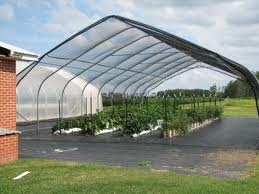
by Eddie Powell | Aug 12, 2014

Shade House for early fall crop
Credits: UF/IFAS
In fall, many Florida homeowners enjoy growing their own vegetables but are faced with late summer heat issues. This happens during the first few days of August here in north Florida. Most cole crops are recommended to be planted for the fall as early as August 1, but they must be protected from the hot weather or they may need to be replaced if hot weather damages them. A diverse selection of both heat-resistant and tender plants should be planted in order to prevent total devastation of the garden by extremely hot weather.
The site selection for tender plants should be number one on your list when protecting from heat. Fall vegetable plants need a site with good air flow to protect them from the early season hot temperatures. Arranging susceptible plants along a shade barrier can protect them from direct hot sun, especially from afternoon sun. Poorly drained soils result in weak shallow roots which are more susceptible to drying out during a heat wave.
Plants grown with the correctly applied rate of nutrients will tolerate hotter temperatures better and recover from wilt injury faster than plants grown with little to no nutrients. Watering vegetable garden plants early in the day can help protect them. A well-watered soil will stay cooler than a dry soil and keep plants hydrated. However, saturated soil conditions can damage the root systems of most plants over a few days, so make sure the ground is well-drained.
Healthy vegetable plants are more resistant to heat than vegetable plants weakened by disease, insect damage, or nematode damage. Routine inspection for pests and implementation of necessary control measures are essential. Feel free to contact your local county extension office for information on pest identification and recommended controls.
Shade cloth coverings can help protect vegetable plants more from extreme hot temperatures during the beginning of fall gardening. Shade Cloth that extend to the ground and are not in contact with the vegetable plants foliage can lessen heat injury to the plant. If the vegetable plant foliage is in contact with the cover it is often dried out or injured because of heat transfer from cover the foliage can burn the leaves. One example of excellent plant covers is shade cloth or even an old trampoline cover. To learn more on heat protection of vegetable plants call your local UF/IFAS Extension Service

by Eddie Powell | Jun 3, 2014
During this growing season monitor your plants and keep them healthy as a healthy plant will be able to better survive an invader attack.
Nematode populations can be reduced temporarily by soil solarization. It is a technique that uses the sun’s heat to kill the soil-borne pests. Adding organic matter to the soil will help reduce nematode populations as well. Nematodes are microscopic worms that attack vegetable roots and reduce growth and yield. The organic matter will also improve water holding capacity and increase nutrient content.
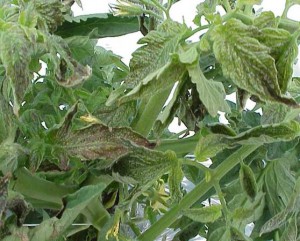
Tomato Spotted Wilt Virus
Credits: UF/IFAS
If you choose to use pesticides, please follow pesticide label directions carefully. Learn to properly identify garden pests and use chemicals only when a serious pest problem exists. If you have questions please call your UF/IFAS county extension office. We can provide helpful information about insect identification.
Organic gardeners can use certain products like BT(Dipel) to control pests. Please remember not every off-the-shelf pesticide can be used on every crop. So be sure the vegetable you want to treat is on the label before purchasing the product.
Follow label directions for measuring, mixing and pay attention to any pre-harvest interval warning. That is the time that must elapse between application of the pesticide and harvest. For example, broccoli sprayed with carbaryl (Sevin) should not be harvested for two weeks.
Spray the plant thoroughly, covering both the upper and lower leaf surfaces. Do not apply pesticides on windy days. Follow all safety precautions on the label, keep others and pets out of the area until sprays have dried. Apply insecticides late in the afternoon or in the early evening when bees and other pollinators are less active. Products like malathion, carbaryl and pyrethroids are especially harmful to bees.
To reduce spray burn, make sure the plants are not under moisture stress. Water if necessary and let leaves dry before spraying. Avoid using soaps and oils when the weather is very hot, because this can cause leaf burn.
Control slugs with products containing iron phosphate.
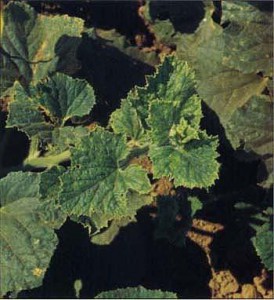
Cucumber Mosaic Virus
Credits: UF/IFAS
Many common diseases can be controlled with sprays like chlorothalonil, maneb, or mancozeb fungicide. Powdery mildews can be controlled with triadimefon, myclobutanil, sulfur, or horticultural oils. Rust can be controlled with sulfur, propiconazole, ortebuconazole. Sprays are generally more effective than dusts.
by Eddie Powell | Apr 29, 2014

Five Gallon Container Plants
Credit: Eddie Powell

One Gallon Container Plants
Credit: Eddie
GARDENING IN A BUCKET: Grow wholesome, healthy vegetables in a container with this plan.
Materials
-
5 Gallon plastic buckets
-
40 pound sacks of Potting soil
-
40 pound sacks of compost
-
garden trowels or shovels
-
wheel barrow or other large mixing container
-
controlled release fertilizer
-
packs of vegetable seeds
Recommended: All Herbs, Tomato, Cucumber, Squash, and Zucchini
Procedures:
-
In a large container or on a plastic mat on the ground, mix potting soil and compost in a 2:1 ratio. Two scoops of soil and one of compost, add ½ cup time release fertilizer, every 6 weeks
-
Drill 6 to 8- ½ inch holes in the bottom of the 5-gallon buckets. Make sure that the buckets did not contain toxic materials!
-
Fill the bucket to within 3 inches of the top of the container
-
Place container in sunny spot that will allow drainage
-
Plant chosen vegetable with two seeds in center of the container
-
Water well and keep moist but not wet
Plant requirements:
-
Minerals. Basic needs in plants are Nitrogen (N), Phosphorus (P), Potassium (K). These are listed on all fertilizers as a ratio, example – 8-8-8 contains 8 % Nitrogen, 8% Phosphorus, and 8% Potassium 76% being filler.
-
Sunshine or artificial sources of light (grow lights).
-
Water. Soil must be kept moist but not wet. Wet soils will create root-rot and encourage fungus. Measure moisture by pinching the soil to determine if the soil is moist. Adding water as needed; plants in full sun will need much more water than plants in partial shade. Wilted plants need more water!
-
Carbon Dioxide (CO2). Plants absorb CO2 and give off Oxygen making them VERY important to human and all animal life.
-
Proper Temperatures. Too cold, plants die, too hot plants die. Make sure that if your plants are outside and the temperature goes below freezing, the plants are protected.










